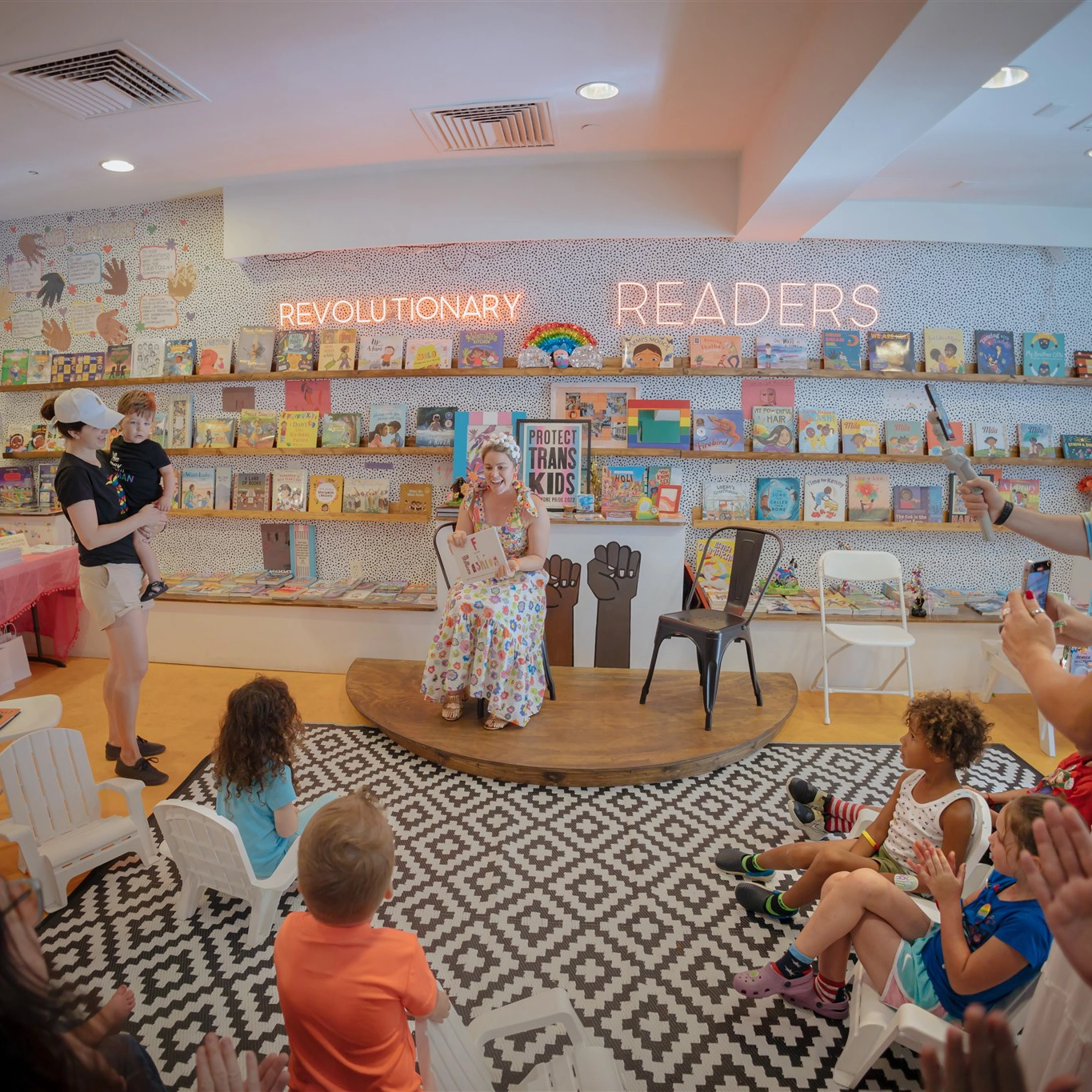by Eric Barton | September 9, 2024
Julia Tuttle: The Mother of Miami
Read a 127-year-old message from Julia Tuttle, preserved in the Bramson Archive.

In the photos that survive of her, Julia Tuttle looks stern and unsmiling, a long dark dress buttoned up to her neck, priestlike, often with the frowning expression of a mother disapproving of a daughter’s suitor.
Married to the owner of a foundry in Cleveland, Tuttle may have been destined for the carefree life of a high-society matron waiting in the study to receive guests, if not for her husband’s tuberculosis. When it took him in 1886, Tuttle dove into the family’s accounts. They were broke.
For many in that position, in that era, you can imagine a life of frugality, widowed and alone, living simply for the rest of her days in tattered mourning dresses. Instead, Tuttle moved with her two children to Florida. She’d inherited land there from her parents in the swampland at the far end of the peninsula. Devoid of roads or even trails through the brambles and flooded land, she set out to found a city.
In modern-day Miami, not a lot of Tuttle’s correspondence exists. Seth Bramson believes he has the only telegram in Miami-Dade sent by Tuttle. Bramson is an adjunct college professor and a historian who started the Bramson Archive, a collection that he says includes 1.5 million pieces of documents and memorabilia, mostly related to Florida railroads.
Tuttle sent the telegram on April 22, 1897. Cryptically, it reads: “Mail alva wood papers today shall be away next week. Julia D Tuttle”
Bramson, 79, figures Alva Wood owned land in Miami. At the time, Tuttle had been purchasing hundreds of acres, gobbling up chunks that she planned to parcel off. Some call Tuttle the Mother of Miami, although Bramson believes more accurately that she simply had the goal of surviving. “I would only say to you that founding a city wasn’t in the forefront of her mind. She was concentrating simply on making money.”
By 1897, Tuttle’s dream of developing South Florida swampland had the promise of today’s internet startups–an idea more than reality. But there was profound hope that it would come soon. Two years earlier, a freeze that had spread across Florida spared Miami. The story goes that Tuttle collected orange blossoms from her backyard on Biscayne Bay and shipped them to Henry Flagler, the railroad magnate, hoping to convince him to lay tracks south from West Palm Beach. Tuttle even gave Flagler a portion of her land along the Miami River in exchange for a railroad stop and a grand hotel.
When we have the factual documents, we know what the truth is.
—Seth Bramson
When she sent that telegram, Tuttle had been living in Fort Dallas, abandoned after the Seminole Wars. Few tradesmen had moved to the city, so Tuttle would have had little chance to fix up the army surplus building to the standards she had once known. “She lived,” Bramson pauses, “decently. That’s the fairest way to say it.”
For Bramson, he sees the telegram, a simple document about what might seem like a mundane transaction, as one more step to understanding a pioneering historical Florida figure. It speaks of Tuttle the businesswoman, dealing in transactions and paperwork and legal proceedings at a time when women, when the phrase businesswoman, was as barren as the Miami coast. Often people try to grandize or make demons out of historical figures, but Bramson says, “When we have the factual documents, we know what the truth is.”
A year before Tuttle sent the telegram, Miami had incorporated as a city of 512 registered voters. It had begun to be parceled off, divided and subdivided, developed and drained, a city to be.

Tuttle died a year later, in 1898, at 50 years old, before she could see it become a reality. Like her husband, she was deeply in debt, and her two children had no choice but to sell her holdings.
Decades passed with the name Julia Tuttle lost to history. That changed when I-195, built in 1959, was renamed the Julia Tuttle Causeway. Now there’s a statue of Tuttle in Bayfront Park. And then there’s the title so often now used with her name: “Mother of Miami.”
What would she think of the Miami of today, with a GDP approaching a half-trillion yearly, the Wall Street of the South, the Capital of the Americas? After she had shed the stigma of destitute widow and, as a single mother, helped a city rise from the swamps, she wrote to a friend: “It may seem strange to you but it is the dream of my life to see this wilderness turned into a prosperous country.”





